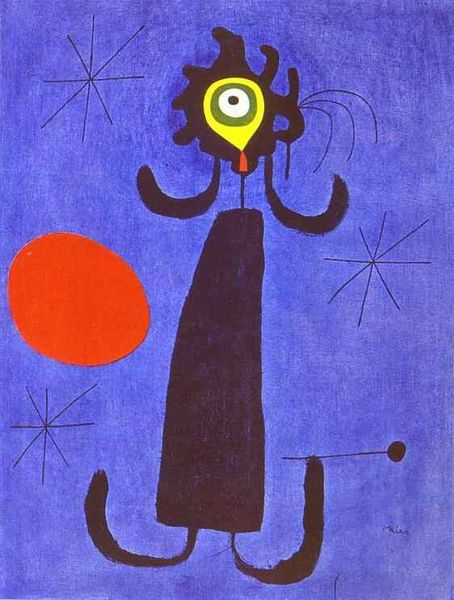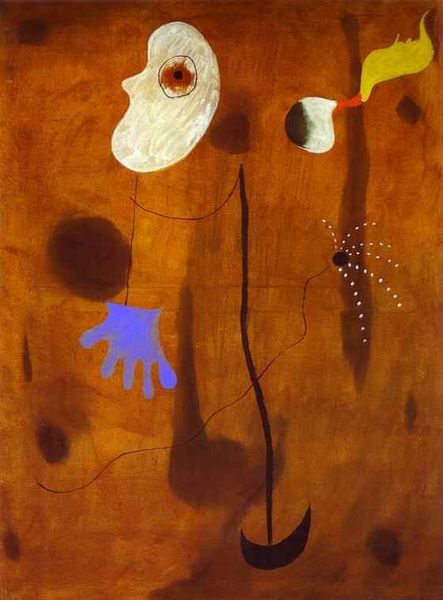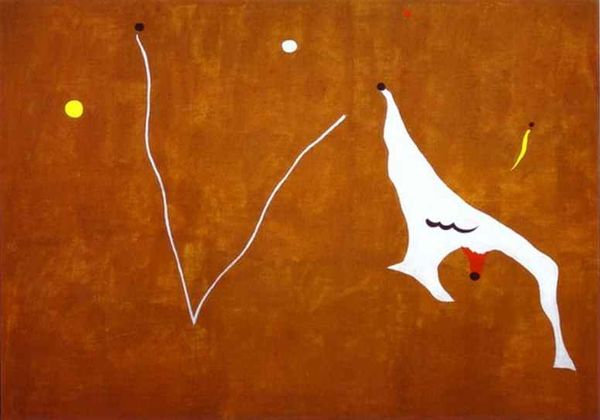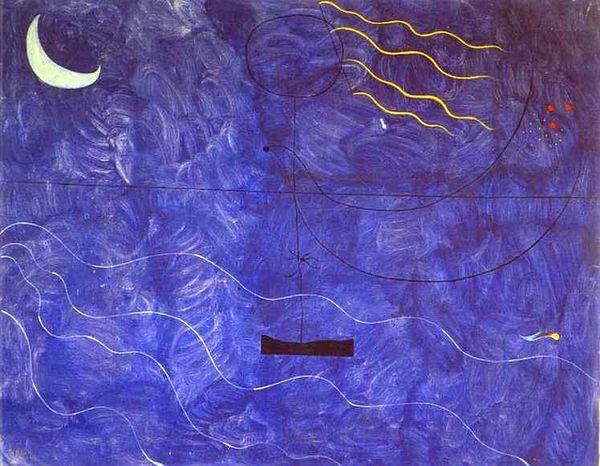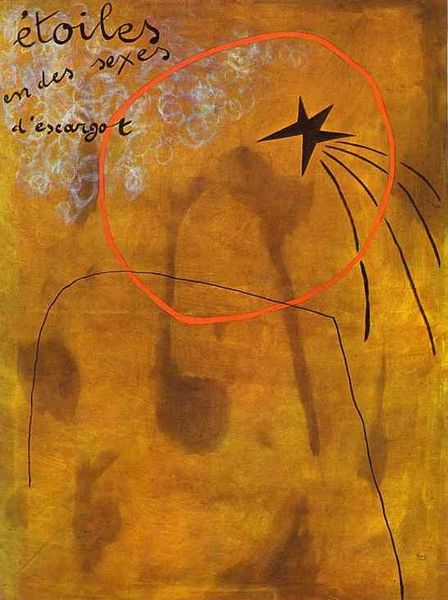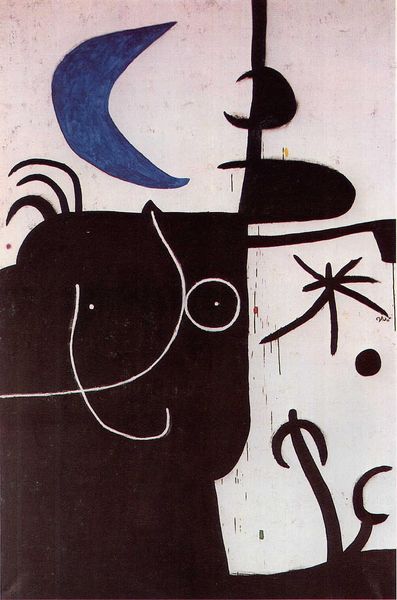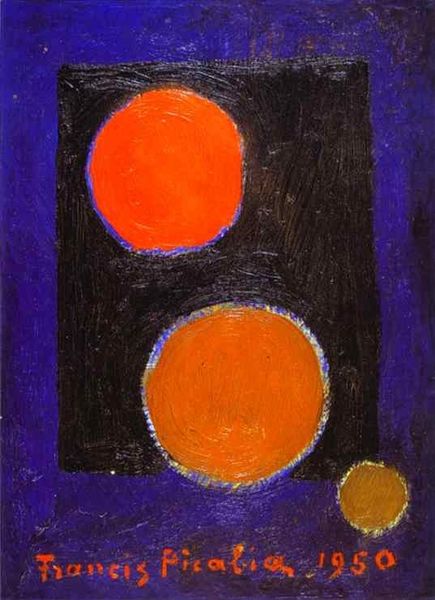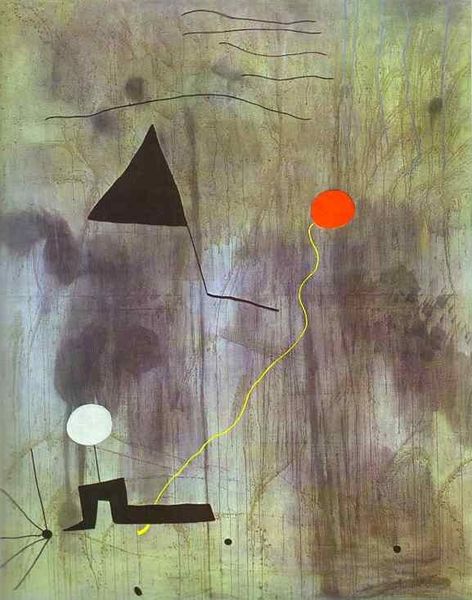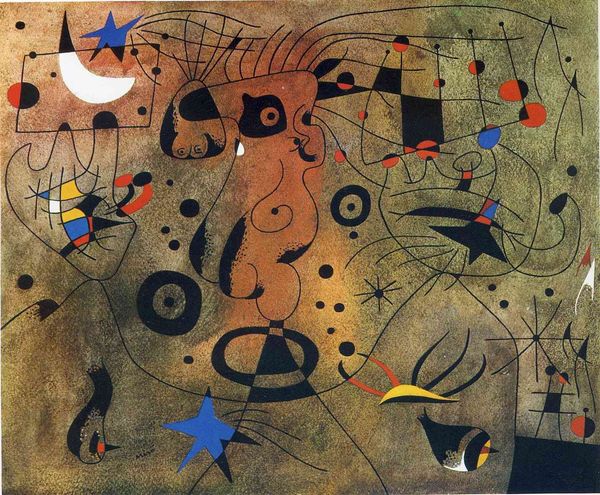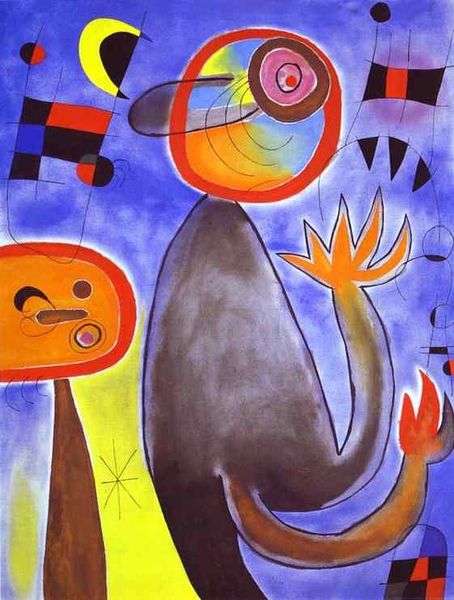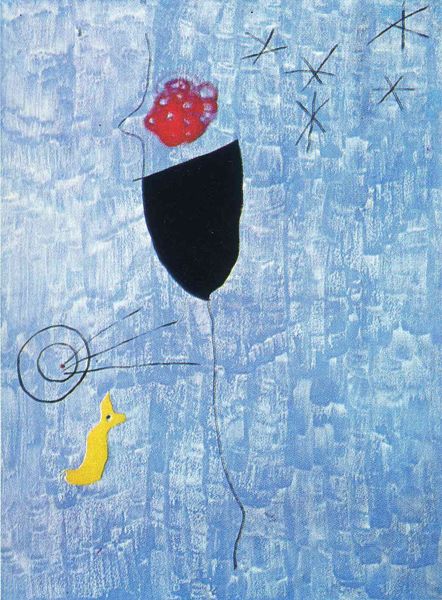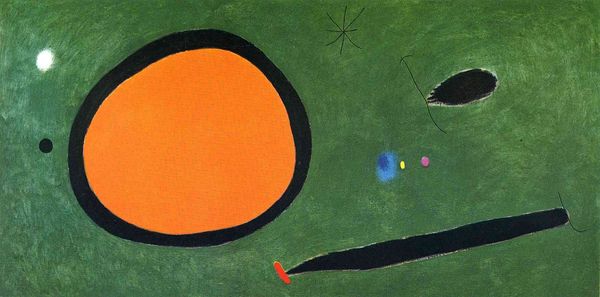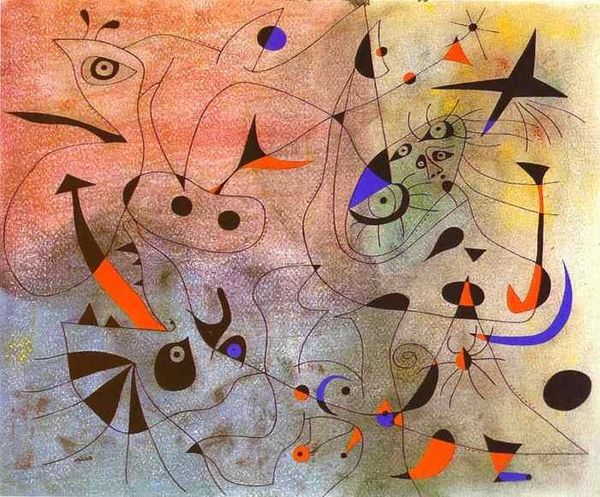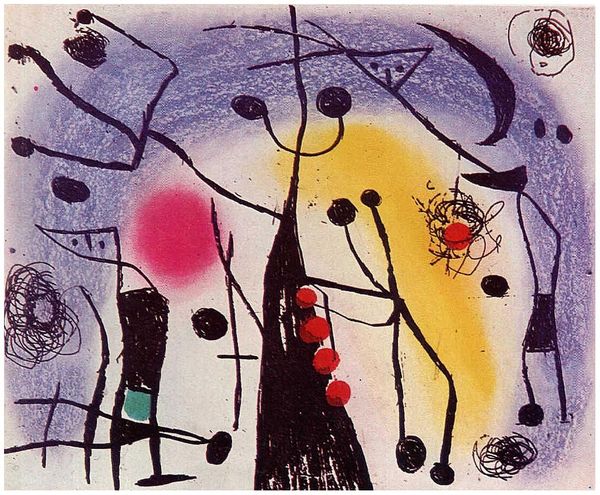
Dimensions: 115.5 x 88.5 cm
Copyright: Joan Miro,Fair Use
Curator: We're looking at Joan Miró's "Dancer," painted in 1925. It's currently held at the Galerie Rosengart in Lucerne. What are your initial thoughts? Editor: Well, it’s arresting—the boldness of the blue oil paint against what seems like a canvas ground left relatively raw, textured by the application. There’s something primitive, almost elemental, in this combination. Curator: Absolutely. The forms Miró uses are deceptively simple, like pictograms. Note the spiral form composed of staccato, almost musical dots, placed against a single bold red heart, both figures held in space. Editor: Held indeed! It's fascinating how the linework barely there, feels load-bearing. Tell me about the materials, the surface texture; what effect was Miró going for by not fully concealing the canvas? Curator: Miró often invoked universal themes in his art. This work touches upon themes of love, beauty, and the celebration of the female form in what were considered, at the time, unorthodox ways, playing on notions of memory and symbolic associations, pushing past traditional ways of depicting bodies in favor of form itself. Editor: The contrast intrigues me. You've got these deliberately childlike shapes alongside the rawness of the material. The textured edges clash with the slick flatness of that blue plane. The visible support screams, "I am made." Was he trying to emphasize the physical making in response to prevailing formalist tendencies? Curator: Perhaps. He used simple symbolism combined with an early modernist pictorial vocabulary to reflect shared, archetypal understandings about universal human experiences, as well as exploring dream imagery. The "Dancer," reduced to her essence, almost transcends physicality entirely to become something timeless and boundless. Editor: I appreciate how grounded his dreams remained despite the symbolic, abstract language he’s using. The visible materials pull it all back to earth, remind us of the act and the labor. Thank you. Curator: Indeed. I hope you now leave with new eyes after reconsidering its symbolic elements and seeing what lies beneath.
Comments
No comments
Be the first to comment and join the conversation on the ultimate creative platform.
